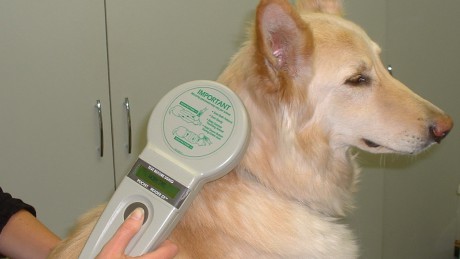
The importation of pets into Ireland is strictly controlled so that infectious diseases such as rabies are not carried in by animals. In the past, a six month quarantine was compulsory for every pet. In recent years, the EU system of Passports for Pets has been introduced, allowing cats, dogs and ferrets to travel between EU member states. Pets from higher risk non-EU countries also have easier access than in the past.
The rules for pets depend on the country where they originate.
EU countries
A valid EU Pet Passport is needed, available from vets across the EU. The Passport certifies that:
- The pet is travelling from an eligible country.
- The pet is identified by an implanted microchip.
- The pet has been vaccinated against rabies subsequently at least 21 days before travel
- Dogs coming from countries other than the UK, Finland or Malta have been treated against tapeworm between 24 and 120 hours before travel. The time and date of treatment are entered on the passport.
- Treatment for ticks is not compulsory but it is advisable to get it at the same time as the tapeworm treatment.
If there are more than 5 animals, a veterinary health certificate showing that animals have been clinically examined within 48 hours of departure is also required.
Non EU countries
If you want to import a cat, dog or ferret into Ireland from a country outside the EU there are two categories of countries: qualifying “lower-risk” countries and non-qualifying “high-risk” countries.
Pets from qualifying non-EU countries
Countries where rabies is not widely found, including Australia, USA, Canada and over thirty other countries
These basically have to comply with same rules as EU countries except that a certificate is used instead of an EU pet passport document. These pets must:
- Be identified by a microchip
- Be vaccinated for rabies subsequently
- Have a veterinary health certificate confirming rabies vaccination and tapeworm treatment
Non-qualifying high-risk countries
Any country not on the low risk list, including most African and many Asian countries
These pets must:
- Be microchipped (this must be done before anything else)
- Be vaccinated for rabies subsequently
- Have a blood test after the rabies vaccination at least 3 months before entry
- Have a veterinary health certificate confirming rabies vaccination, blood testing and tapeworm treatment
It’s basically the same except that a blood test is needed to prove that the pet has good immunity against rabies
If any pet does not meet the entry requirements it will be returned to the country of origin at the owner’s expense.
To find out the latest on these regulations, visit the Department of Agriculture website
On this week’s Pat Kenny Show we talked about this issue, and also about Pete’s fast/cleanse programme. And as usual we took some questions from listeners.



Please note that I am unable to answer veterinary questions in comments. If you have questions or concerns about your pet's health it is always better to contact your vet.